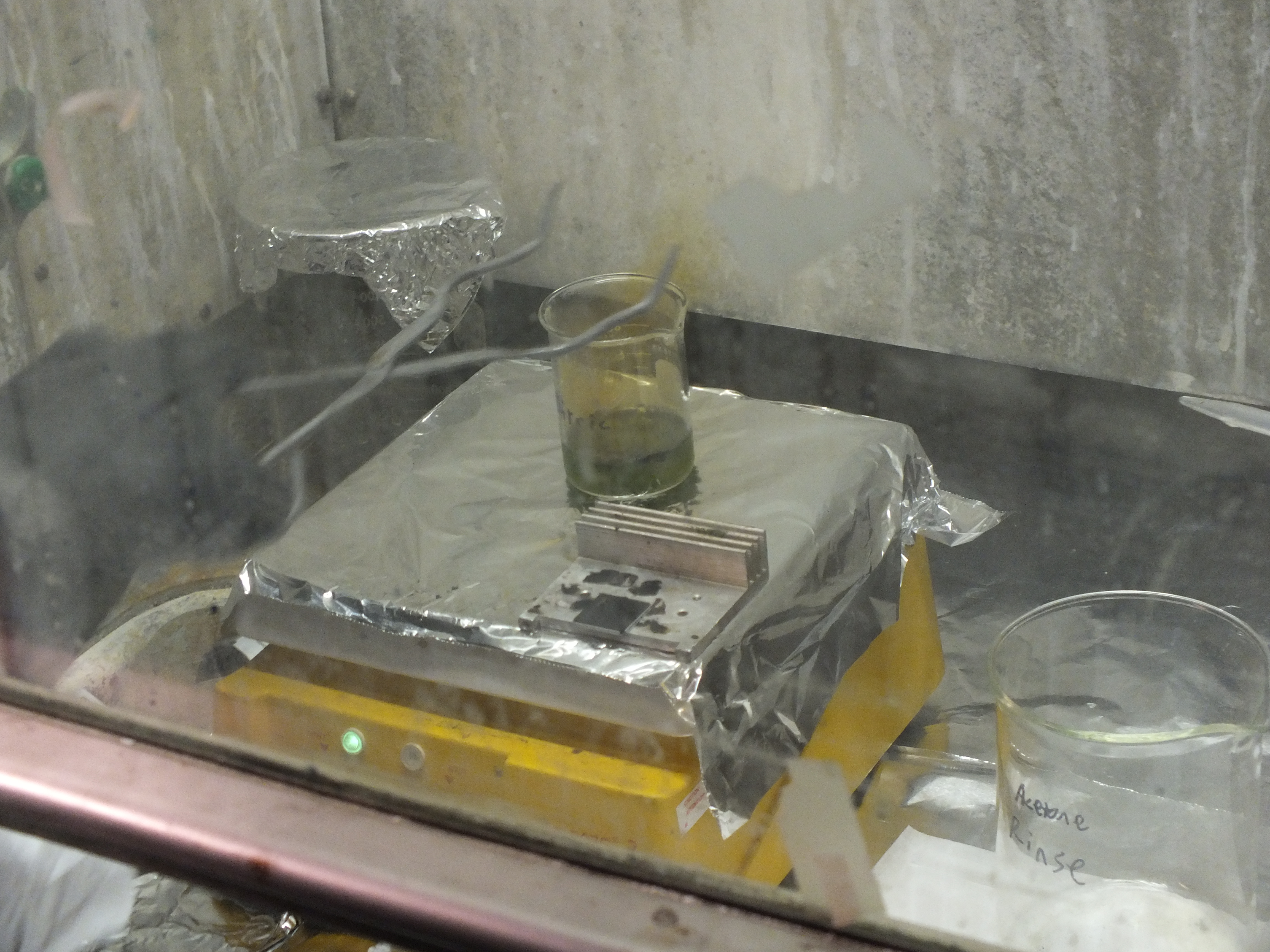Materials
- 70% nitric acid
- Epoxy encapsulated die, ex: PDIP package
Equipment
- Hot plate
- Beaker
- Watch glass (optional)
- Thermometer (optional)
- Fume hood or local exhaust
Pour out 25 mL of 70% nitric acid into the beaker. This volume is enough to dissolve most packages and provides enough liquid to buffer the temperature. If a watch glass is available, put it on top of the beaker. This will create a reflux condenser that will reduce fumes and reuse evaporated acid. Note the pour spout of the beaker should keep the assembly from building up pressure.
Working in a fume hood is very strongly recommended, however if small enough amounts of acid are used it may be possible to work safely in a well-ventilated open space.
Heat solution to 75-80C. The key point is that the acid should not boil, but the epoxy should be rapidly bubbling. Something like this:
Likely nitrogen dioxide gas will form and the solution will turn green. Using the watch glass greatly helps in reducing fumes, but it is highly recommended to perform this in a well ventilated area or, ideally, a fume hood. The solution will turn green from copper dissolving, such as on the carrier island. If you have copper top metal, you will need to add sulphuric acid to the mixture.
Depending on how large of a chunk you have, acid concentration, and epoxy type, this can take from 10 minutes to several hours. The epoxy should become soft and begin to breakup. Decant the acid and wash the die off with acetone. If available, it should also be cleaned in ultrasound.


